Executive insights
Maritime, logistics leaders offer views on business
Executive insights
Maritime, logistics leaders offer views on business
Leaders from Virginia’s maritime and logistics industries share their thoughts about where their sectors stand amid labor shortages, growing cargo volumes and the pandemic’s lingering impacts.
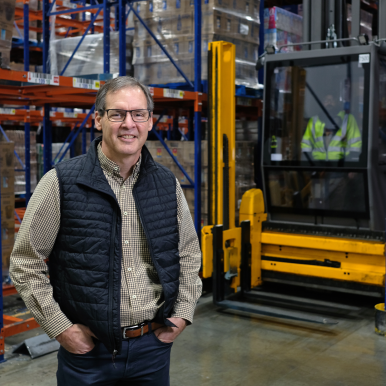
Devon C. Anders
President, InterChange Group Inc.;
Chair, Virginia Maritime Association Valley Logistics Chapter
Harrisonburg
VB: How is your company hiring and retaining staff?
Anders: We have intensified through omnichannel recruitment, including social media, local television, testimonials, referrals and sign-on bonuses. These, along with a commitment to a positive culture, leadership training, increased compensation, a new health clinic and other initiatives, have helped retain and add to our team. We are continuing to implement automation and other ways to optimize handling in a shrinking labor market.
VB: How is the supply chain strain affecting your business and clients?
Anders: The last two years have caused a higher demand for space due to e-commerce and removing pre-pandemic just-in-time inventory models. However, the utilization of this space remains a challenge.
Customers cannot procure all the necessary ingredients and packaging to manufacture to meet demand. Products are turning faster, but inventories are not rising. This appears to be far from over as supply chains are still very strained due to raw material shortages and geopolitical concerns. I believe continued inflation and increasing interest rates will soon dampen demand, and that will produce other opportunities.
VB: What do you hope to see happen in terms of federal or state policy that will help the logistics industry?
Anders: All participants in the supply chain will benefit from modifications of commercial driver’s license requirements, thereby increasing the candidate pool. A significant constraint in the supply chain comes from the pre-pandemic truck driver shortage that has been further exacerbated [since then]. Additionally, legislation and regulations surrounding demurrage and detention of ocean containers is sorely needed.

Nancy Grden
Executive director, Hampton Roads Maritime Collaborative for Growth & Innovation; Associate vice president, Institute for Innovation and Entrepreneurship
Norfolk
VB: What will be the biggest factor impacting the maritime industry in the next five years?
Grden: The biggest factor — and opportunity — for the industry is innovation! A recent report, “A Pathway for Maritime Innovation in Hampton Roads,” by TEConomy Partners, noted the unique mix of major economic drivers … related to maritime. The study names four cross-cutting areas of innovation — autonomous systems, digital transformation, cybersecurity and advanced manufacturing — that present immediate opportunity for Hampton Roads and the commonwealth. The report also recommended four specific pathways, which are in various stages of planning and implementation.
VB: How will the collaborative play a role in that?
Grden: HRMC is an umbrella organization and was formed to recognize and coordinate the array of assets and initiatives Hampton Roads has in its broad maritime and water ecosystem. HRMC identified innovation as a major area of focus for the future, and through Reinvent Hampton Roads and Old Dominion University, sponsored the TEConomy report mentioned above. In addition, HRMC was an early and strong supporter for Old Dominion University to play a leadership role in the region’s maritime economy; build and expand its existing related academic programs and research centers; and be globally recognized as an institution focused on maritime. ODU President Brian O. Hemphill announced the ODU Maritime Initiative last November, and there is an active national search underway now for the leader.
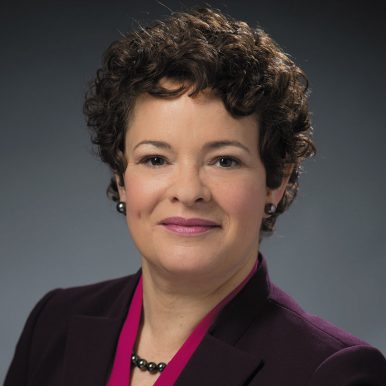
Jennifer Boykin
President, Newport News Shipbuilding; Executive vice president, Huntington Ingalls Industries Inc.
Newport News
VB: What is your biggest challenge in hiring and retaining employees?
Boykin: To do the work that we do, we need to hire and retain a highly trained workforce with a wealth of knowledge and experience.
An important component to retaining this key talent is listening to our people and acting on the valuable feedback we receive. Based on these conversations, we’re taking action to enable our workforce by providing development opportunities and fostering a work environment that inspires our shipbuilders to be their best. The labor pool is smaller and the competition for talent is greater than it has been in years past, and we’re seeing the same recruitment challenges as employers across the country. Yet, despite these challenges, I am confident we will continue to hire and retain future generations of shipbuilders.
VB: Are there any supply chain issues affecting your current backlog of projects?
Boykin: The shipbuilding supply base faces many of the same challenges that we experience at Newport News Shipbuilding. After two years of pandemic impacts, many of our suppliers are now challenged with securing, developing and retaining a proficient workforce in a tight labor market. These factors can impact production schedules and also the price of materials. NNS actively partners with our suppliers to mitigate risks and minimize the pressure on ship construction efforts.
Our Navy partner also plays a critical role in managing supply base risk. Specifically, some of our contracts include funding for investment in supplier development and risk mitigation strategies. This provides an opportunity for suppliers to prepare their facilities, processes and workforces to meet the no-fail mission of delivering quality ships to the Navy.
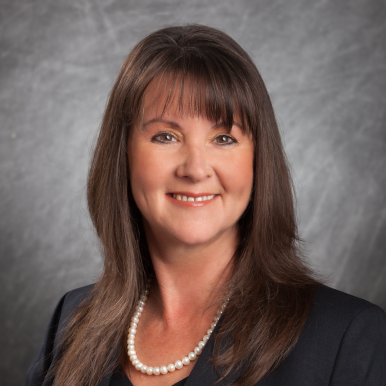
Deborah C. Waters
President, Waters Law Firm PC; Commissioner, Virginia Port Authority
Norfolk
VB: What’s the biggest challenge facing Virginia’s maritime industry?
Waters: The biggest challenge is development of a pipeline for an educated and skilled workforce sufficient to satisfy and promote steady growth in the maritime and extended supply chain. In the past five years, Virginia invested over a billion dollars to upgrade its state-owned port facilities to some of the most advanced and efficient in the world; invested hundreds of millions of dollars to support Virginia economic development and growth in a variety of ways that are making a difference; and nurtured and developed cohesive relationships in the industry in Virginia and around the globe to create a network of cooperation to further the economic interests of the commonwealth and its citizens. The resulting past and anticipated commercial success have showcased the urgent need for targeted avenues of education and training in the field.
Due to market forces exacerbated by the COVID-19 pandemic, which caused an unprecedented demand for goods, the flow of the global supply chain — of which the maritime industry is a significant part — has been crushed and clogged as businesses and their workforces strained to maintain business continuity. Yet, new and established businesses using modern technology opened in all parts of the commonwealth, creating high demand for an educated and skilled workforce at all levels.
Virginia must rise to the challenge of supplementing its existing workforce by providing avenues such as STEM programs, apprenticeships [and] technical training and management education, such as ODU’s Maritime and Supply Chain Management program. The need to support education of our workforce is urgent but will pay long-term dividends in the form of quality jobs for families who live in the region and beyond.
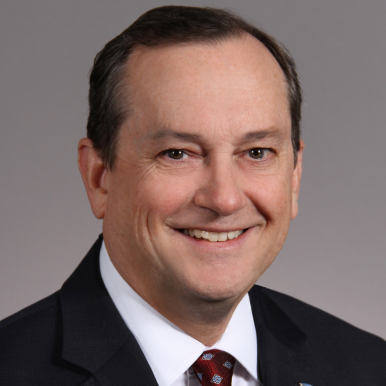
David C. White
Executive director, Virginia Maritime Association; Executive vice president, Hampton Roads Shipping Association
Norfolk
VB: What will be the biggest factor affecting the maritime industry in the next five years?
White: The overall amount of work and change, which will occur on multiple fronts, and having the people to meet those demands. Cargo volumes, shipbuilding and ship repair workloads, offshore wind development, and maritime and transportation infrastructure projects are all positioned for growth. Concurrently, we expect to see deployment of innovative technologies, many designed to meet increasing pressures to improve supply chains, mitigate cybersecurity threats and meet decarbonization goals and requirements. It is important to also consider the effects of higher costs and that Russia’s war on Ukraine is a sudden wild card, with particular implications for cyberthreats, trade relations, and energy policy.
VB: What do you hope to see happen in terms of federal or state policy that will help the maritime industry?
White: The VMA continues to inform lawmakers and executive branch leadership about the challenges and opportunities in front of our industry and encourage them to make needed investments. We must complete the dredging to make our shipping channels the widest and deepest on the East Coast, increase the cargo handling capacity of our marine terminals and freight corridors, increase our inventory of shovel-ready sites for industrial development, and seize on the opportunity to become a hub for offshore wind.
Beginning in K-12, we must modernize and expand our education and training programs, so they better prepare more people who are interested [in] and prepared for the opportunities our employers offer. The bipartisan Infrastructure Investment and Jobs Act presents a once-in-a-lifetime opportunity, but there will be fierce competition between states for these dollars. Winning requires coordination and collaboration between industry, Gov. Glenn Youngkin’s administration, the General Assembly and Virginia’s congressional delegation.
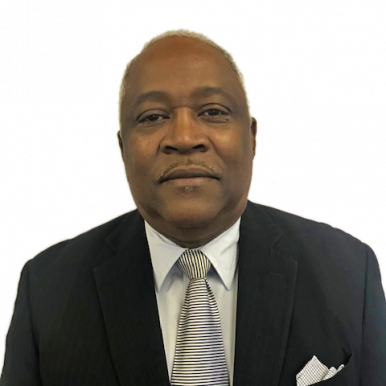
Tommy White
Vice president, California Cartage Co.; Director, Virginia Maritime Association
Suffolk
VB: What will be the biggest factor impacting the maritime industry in the next five years?
White: There are several areas that will play a big role in the next five years, from labor to port congestion, which have had a negative effect on the supply chain. I would expect after the next five years, we will see more manufacturing return stateside if we can solve the labor issue. Our warehouses and distribution system will become more automated over the next few years due to the increase in competition for — and lack of — labor.
VB: How is the supply chain strain affecting your business and clients?
White: Over the last two years we [have seen] record volume levels, but [have been] working with fewer resources … from personnel to equipment due to pandemic. My staff has worked from the office the entire time to make sure that, as an essential business, our customers and end users received
high-quality service.
VB: What do you hope to see happen in terms of federal or state policy that will help the maritime industry?
White: On a federal level, I’d like to see some reforms on how much steamship lines are allowed to charge beneficial cargo owners and trucking companies for goods that remain at the ports due to lack of ability to move them, and investment from the state recognizing the importance of the maritime industry.
C
















